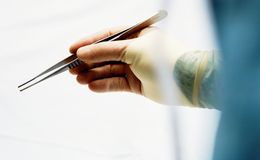
Organ donation may become unnecessary in the future
Waiting months for a donor may soon become a thing of the past. A man with late-stage tracheal cancer leaves the hospital Friday cured, thanks to a completely synthetic windpipe.
The patient, a 36-year-old Eritrean, was originally diagnosed with the rare disease in 2008 and faced a bleak future when chemotherapy, radiation and surgery all failed, CNN reports. The tumor soon grew until it almost completely obstructed the man’s windpipe, and doctors were suddenly working with a serious deadline. So instead of waiting for a matching windpipe to become available, scientists decided to make their own.
They used the natural structure of the windpipe to shape the framework of the artificial organ, creating a Y-shaped form made of spongy, flexible polymers, describes CNN. The trachea, the tube that connects the voice box and enters both lungs, was then immersed in a solution that contained the patient’s stem cells. The process, similar to seeding a lawn, encouraged cells to grow on the artificial organ. Dr. Paolo Macchiarini, a professor of regenerative medicine at Stockholm’s Karolinska University Hospital where the procedure took place, described the process saying, “Stem cells from the own patient were growing inside and outside. This structure was becoming a living structure.”
The “living” organ was transplanted into the patient June 9 and was accepted with huge success. The patient even had a cough reflex two days later.
This transplant is the first time a completely artificial organ has been implanted. According to CNN, Macchiarini pushed science limits three years ago when he created an artificial windpipe combining donor tissue and the patient’s stem cells. Though the implantation was a success, the surgery was still dependent on organ donation, a process with a wait time that prevents many patients from getting well.
The completely artificial trachea doesn’t simply symbolize a more streamlined future of transplants, it also celebrates a “beautiful international collaboration,” says Macchiarini. The effort behind the research, construction and transplant utilized doctors and scientists from Sweden, the United States and the United Kingdom, showing the world exactly what is possible when people work together.














